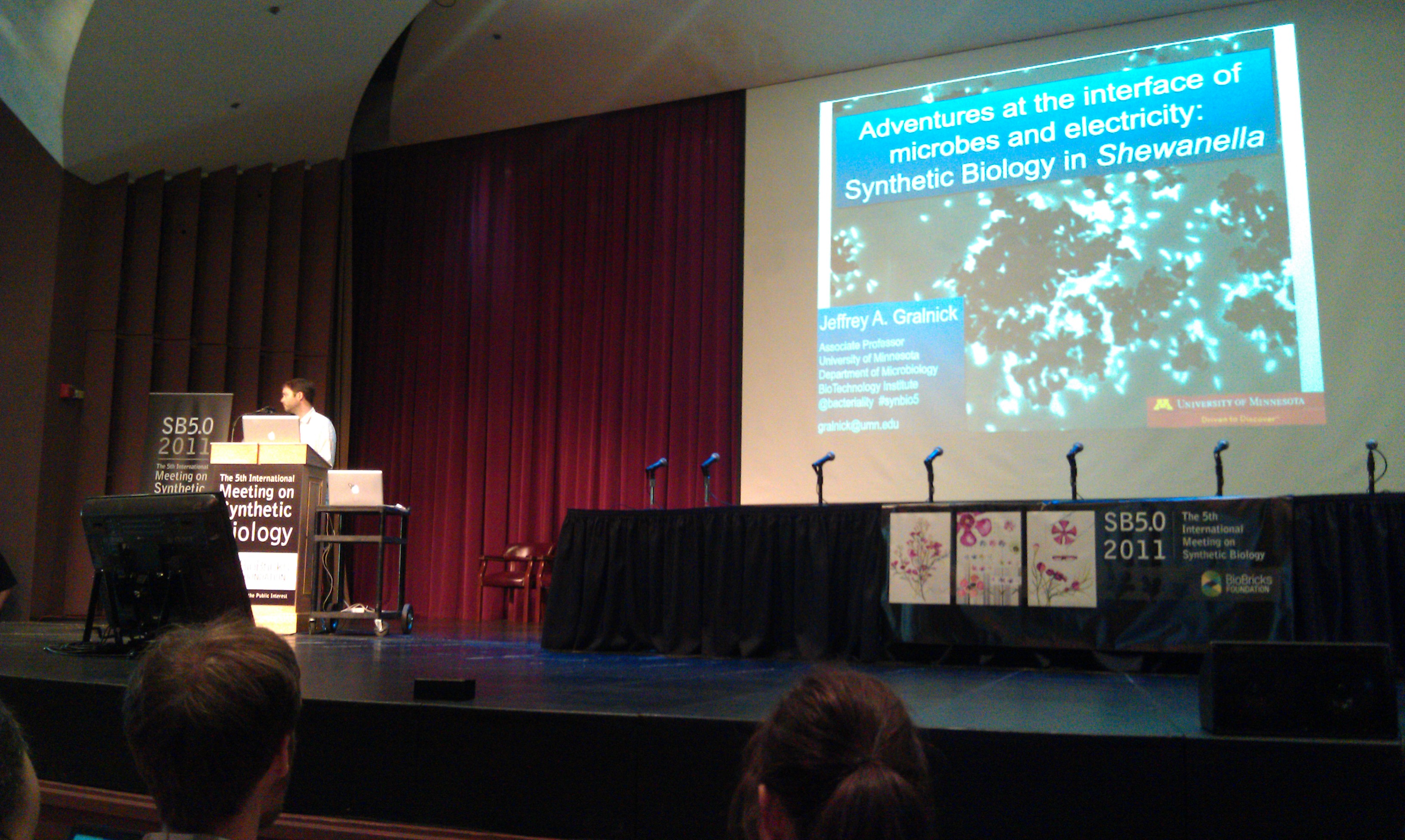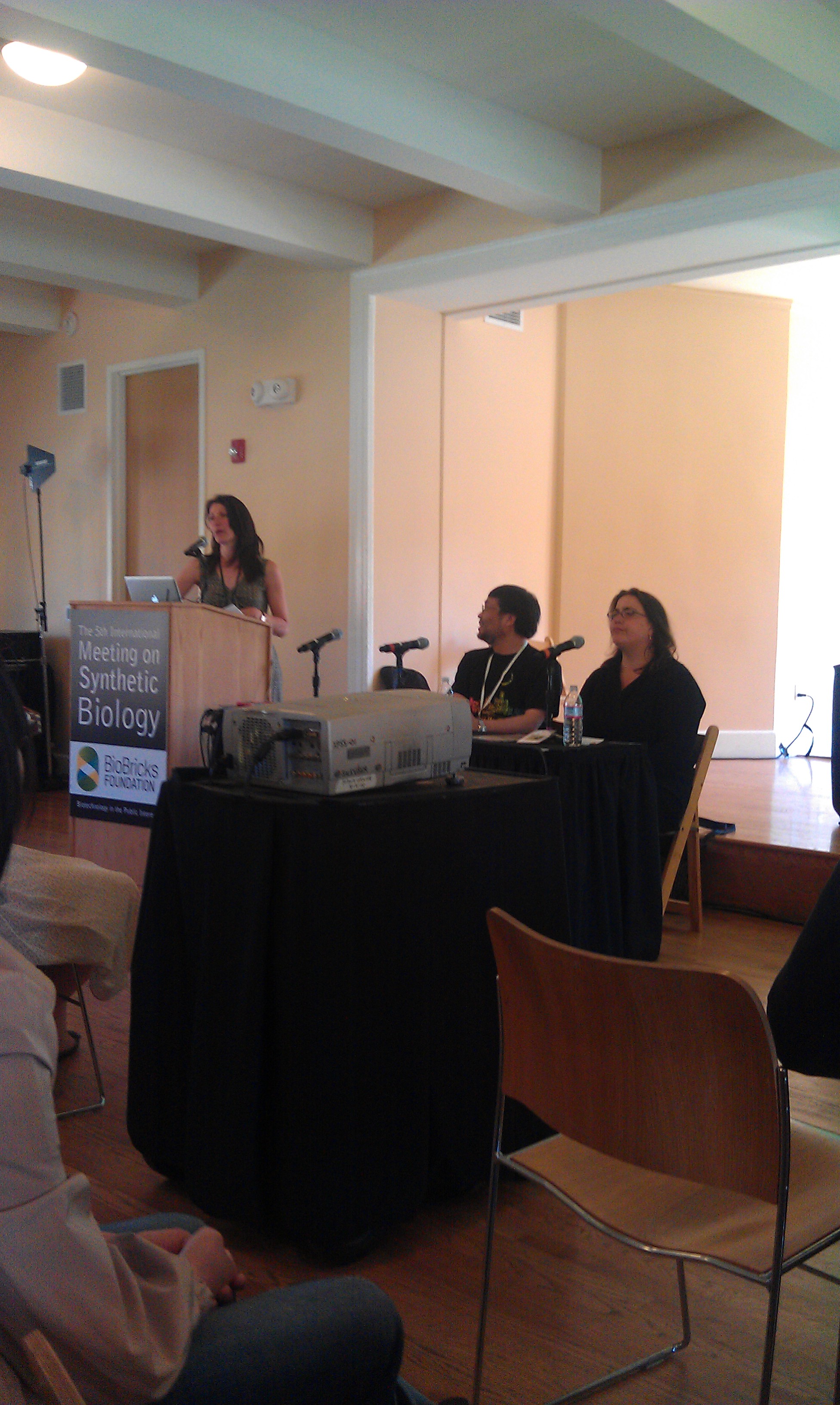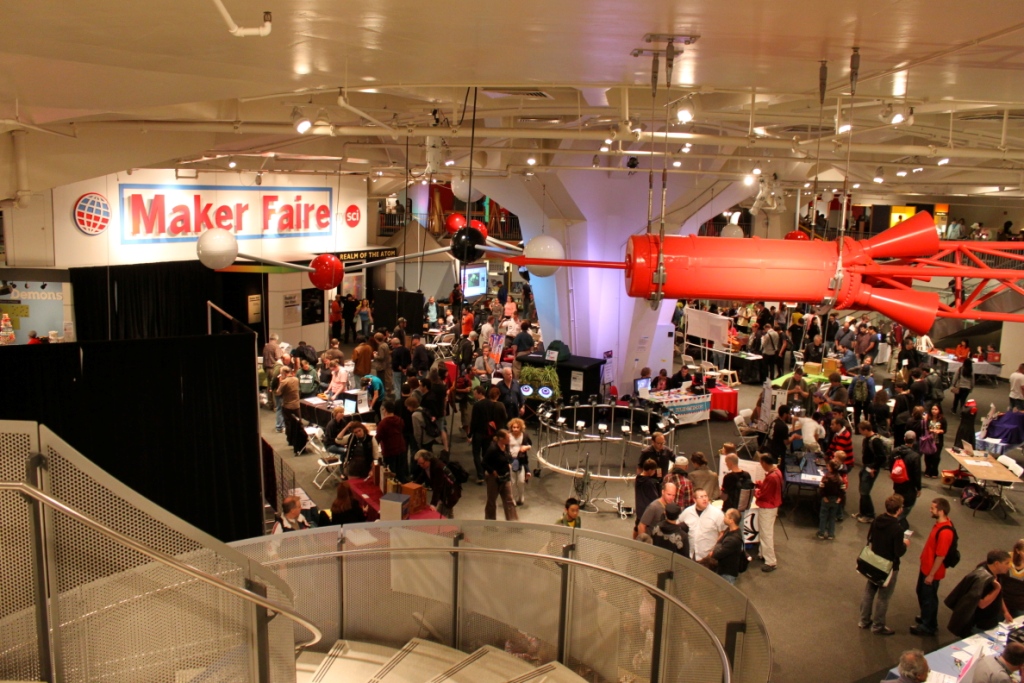Team:Brown-Stanford/Events
From 2011.igem.org
Introduction
Our team was fortunate to attend a variety of exciting events this summer. These included the Fifth International Meeting on Synthetic Biology (SB5.0), the 2011 NASA Lunar Science Forum, and Maker Faire NYC. At each opportunity, we spread our enthusiasm about synthetic biology in space with those around us. In bridging the gap between career biologists, planetary scientists, and the general public, we tried to paint an exciting vision of the future where synthetic biology and humanity's expansion to the stars are closely intertwined. Here are some highlights!
SB 5.0
In June, we were fortunate enough to be right next to the Fifth International Meeting on Synthetic Biology, held at Stanford University. Our entire team attended this three-day long conference, a gathering of the world's eminent figures in synthetic biology. We heard from some of the founding leaders of synthetic biology, researchers, industry representatives, members of the DIY bio community, educators, and students.
Brown-Stanford was not the only iGEM team in attendance at the conference. We had the chance to meet with delegations from other teams around the world and make new friends before the Jamboree. The conversations we began with other iGEMers grew into the collaborative efforts (INSERT LINK?) we engaged in this summer.
SB5.0 was also the introduction of the world's first Synthetic Biology Slam, an open-mic event where participants shared their ideas for the future of synbio- pressing needs, new conceptualizations of the field, project ideas, etc.
Team member and spoken word poet EVAN CLARK wowed the audience with a performance celebrating the magic of weaving genes and words to create something inspirational. Check out what many attendees considered the highlight of the night!
The NASA Synthetic Biology Initiative organized an evening event at NASA Ames Research Center for the attendees of SB5.0. Our team helped run the show that night.
BBC Documentary
We filmed with BBCBBCBBC
Maker Faire NYC
We got in touch with the organizers of Maker Faire, an international event organized by Make Magazine to "celebrate arts, crafts, engineering, science projects and the Do-It-Yourself (DIY) mindset." The first convention was held in the Bay Area in 2006, but has since expanded to satellite locations each year across the US, Canada, and the UK.
Our iGEM team was invited to 2011 Maker Faire NYC, which drew over 25,000 people to the New York Hall of Science in Queens for a weekend of interactive exhibits, hands-on activities, and creative dialogue.
We set up a Maker booth alongside hundreds of other inventors, artists, and engineers. Our exhibit featured a diorama of RegoBricks on a landscape of Martian soil simulant, and petri dishes of our S. pasteurii changing environmental pH via the urease enzyme.
Our project was admittedly loftier and more conceptual than many of the inventions and crafts featured at Maker Faire, but space exploration clearly was a well received topic. The Brown-Stanford table received a constant stream of visitors throughout the weekend. We passed out over 300 pamphlets and probably talked with a few hundred other people.
CONVERSATIONS
On the ethical considerations of our project (the focus of an online FEATURE we produced), we had many in depth conversations. People expressed their opinions how we should be expanding into space, or whether we should be expanding at all. We also tried to capture a range of public sentiment with our interactive survey.
[Survey pictures] [One on one pictures]
It seemed like everyone was excited by the idea of using engineered biology for space. One recurring questions we encountered was, "how far in the future is all of this?" The current capabilities of synthetic biology were often a little unclear; some people already seized on the idea of synthesizing life and offered us grand suggestions for additional Mars BioTools (genetically modified astronauts?). Other people were incredulous towards something as familiar to us as a DNA Registry. It is worth reflecting on the power of science, and scientists, to capture the public imagination, even when it is not fully understood.
 "
"








